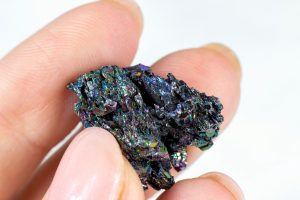Under Armour releases tool for industry to measure microfiber shedding
The soft, cozy properties of fleece jackets have created an uncomfortable problem for the apparel industry: Microfibers that shed from synthetic fabrics as they’re washed, rinsing into sewage systems, and make up as much as one-third of the plastic litter in the oceans, according to the International Union for the Conservation of Nature.
To combat that, Under Armour released a tool in December to help its supply chain partners and other businesses assess how much microfiber sheds from their textiles. The company is integrating the method in its product development process to identify, then tweak or discontinue, high-emitting fabrics. The effort supports the company’s goal of offering 75 percent “low-shed materials” by 2030.
Under Armour pledged in 2021 that the first of its lines to implement its sustainability and circularity principles would reach stores later this year, and to comprise half its products by 2027. Its other circular-economy goals include launching a product take-back pilot in several locations globally by 2025 and bringing a circular footwear program to market by 2024.
Measuring the microfibers that are shed during laundry
The effort emerged from Under Armour’s 35,000-square-foot UA Lighthouse innovation lab in South Baltimore, Maryland. Development partners included James Heal, a U.K. leader in precision testing instruments founded in 1872, and the Hohenstein Institute of Germany, which has seven decades of expertise in textiles.
The test method enables mills and others to view through a microscope how many microfibers remain on a paper filter after simulated washing. The process involves distressing a fabric sample in water, then sucking the liquid and fibers onto a filter. Polyester fleece was an initial focus of the pilot because of its high shedding rates, but Under Armour also tested a variety of other fabrics.
“Our method deploys a 1-to-5 scale, the same scale that is used for pilling and snagging and all the other test methods in our industry,” Under Armour Senior Vice President of Innovation Kyle Blakely said. “It’s just speaking the same global language that every mill in the world really needs to understand. It’s really cutting that learning curve out significantly.”
Most clothes are made with plastic
One-third of the plastic litter in the oceans may have originally sloughed off from petroleum-based fabrics during washing, according to a report by the IUCN in 2017.
Plastic is present in 70 billion of the 100 billion garments sold globally each year, according to the Plastic Pollution Coalition. Sixty-five percent of fibers produced globally in 2022 were synthetic, with polyester accounting for 54 percent, according to Statista. By comparison, cotton’s market share was 22 percent, and other natural plant-based fibers were 5 percent.

In Europe, roughly 25 grams of microfibers per person flow into surface water annually and make up 8 percent of marine microplastic discharges, according to 2018 research by Eunomia and ICF.
Figures such as these, as well as emerging regulations to curb pollution, have galvanized clothing companies to address the ways their products shed plastic into waterways and, ultimately, our food chains.
New laws governing microfibers are cropping up around the world. The European Union banned glitter and cosmetic microbeads in late 2023, in the hope of cutting pollution 30 percent by 2030. The European Commission has said it is “committed to fighting microplastics,” including from apparel, which the IUCN said was the second most prevalent marine source, after plastic pellets and ahead of tires.
Next year, the French government will mandate that new washing machines include microfiber filters. Under Armour created washing machine filters as part of an anti-microfiber effort in 2018. The company used its UA Keeper filter to test some of its fabrics.
Adopting microfiber limits by 2030
“What we realized is in order to engineer textiles that shed less, we had to have a test method that told us how much [shedding] there is in the first place,” Blakely said. “It goes to the people that will help us out the most and help us learn, and we’ll continue to roll it out and or encourage them to invest.”
“We have a decent and long tradition of quietly collaborating with other companies on a range of other issues,” Under Armour Chief Sustainability Officer and VP of Sustainability Michael Levine said. “We really wanted to get this to the point where we felt like we had something actionable, practical and ready to test at scale.”
Blakely and Levine said they hope opening up the test method will help it to evolve and improve, sparking innovative, low-shedding apparel designs.
The 28-year-old company is among the more than 80 signatories to the Microfibre 2030 Commitment alongside Adidas, Gap, Puma and REI. The Microfibre Consortium, based in Bristol, England, launched the commitment in September 2021 to galvanize 80 percent of its signatories to adopt microfiber limits by 2030.
“This move from UA recognizes that more strategic partnerships with leading sustainability initiatives are required to drive collective change faster, ensuring the topic of fiber fragmentation is embedded firmly with the broader sustainability agenda,” said Anna Bateman, senior stakeholder ambassador at the Microfibre Consortium.
The nonprofit’s publicly available Microfibre Consortium Test Method quantifies the mass of microfibers by comparing their weight in grams against the weight in kilograms of the sample from which they came. Ten independent international laboratories have validated the consortium’s process, which simulates domestic laundry cycles and includes eight repetitions for rigor.
The organization’s Microfibre Data Portal will help it develop a global rating system for shedding for the textile industry, Bateman added.
“The fashion industry has an opportunity to act now and advance real solutions that measurably address their contribution to the plastics crisis,” said Aliya Rubinstein, project director for the Oceans Program at the Nature Conservancy, in a press release. “Under Armour’s investment in efforts to understand and reduce fiber shedding is a critical part of a broader suite of interventions urgently needed for us to collectively move the industry in the right direction.”






